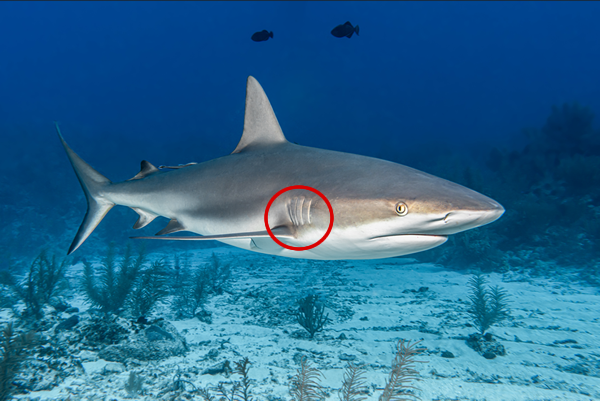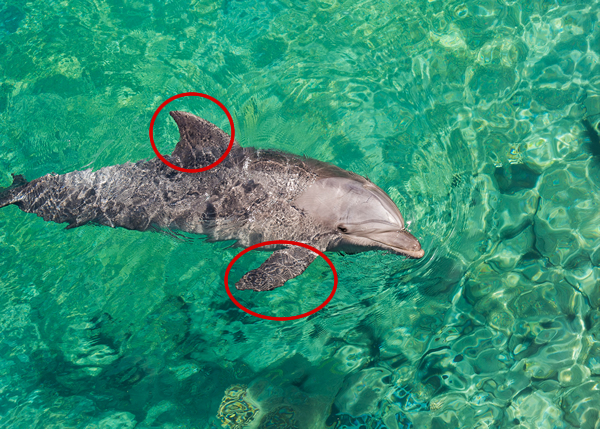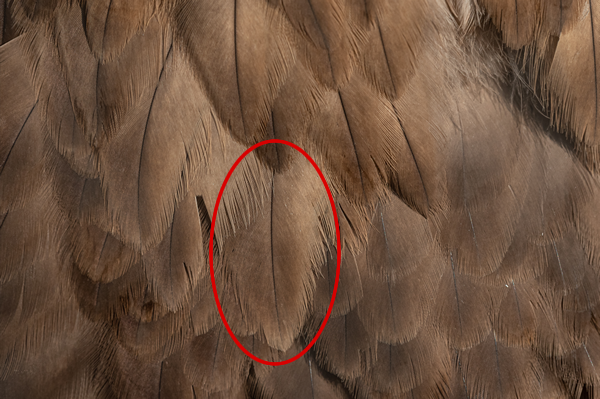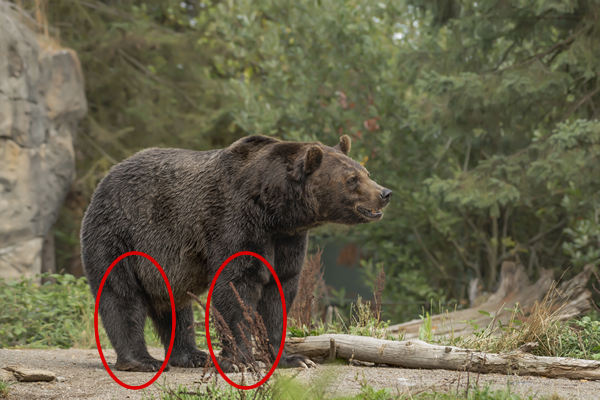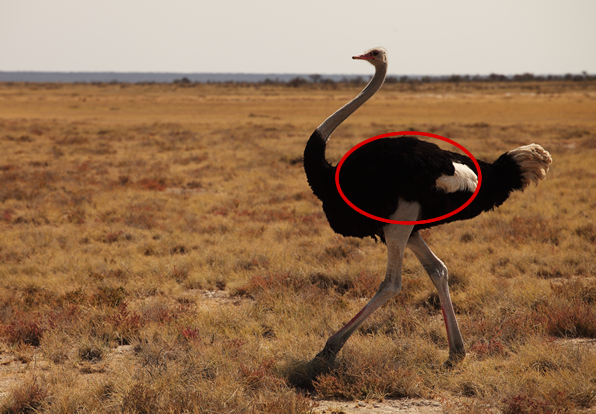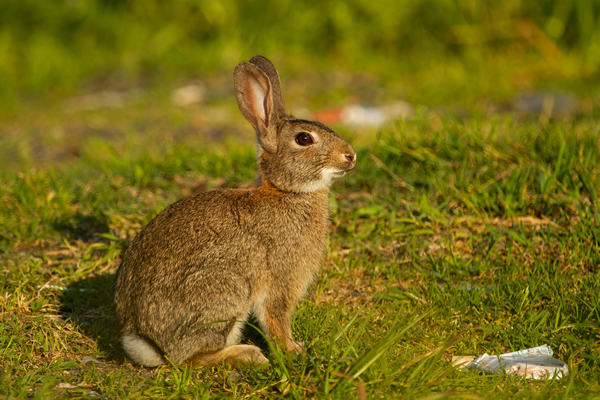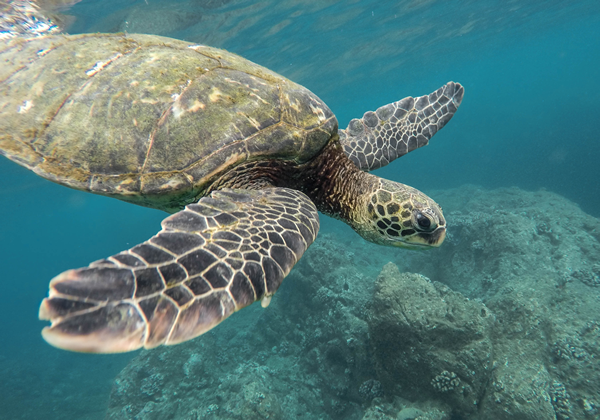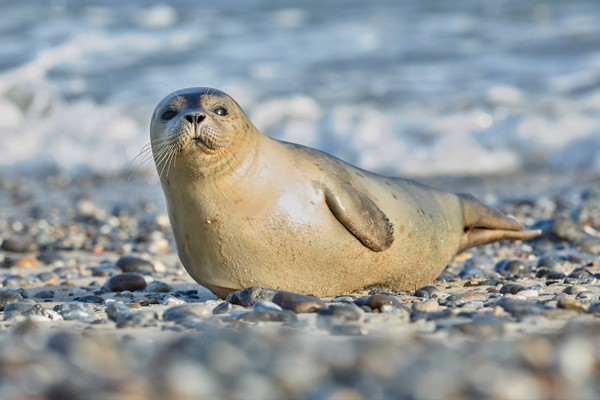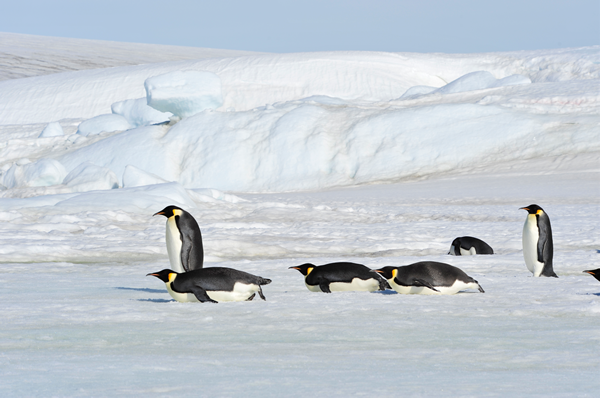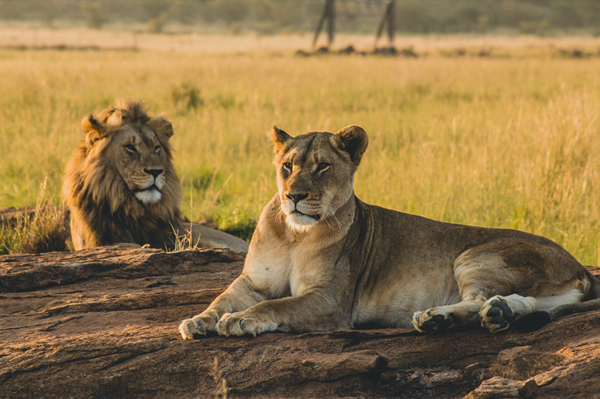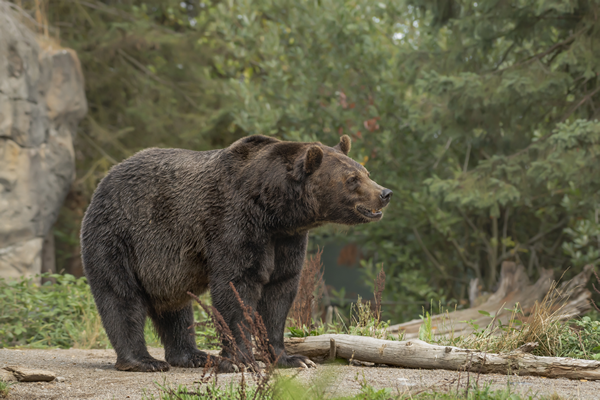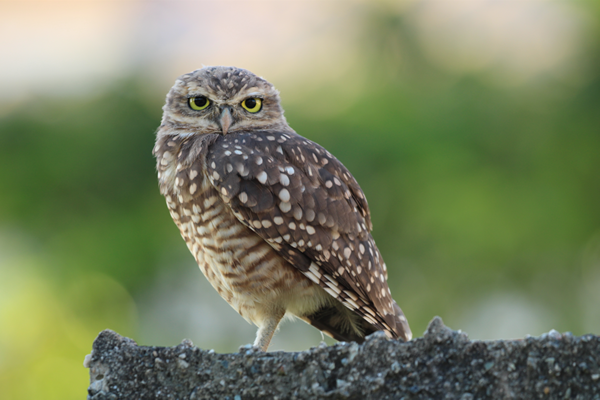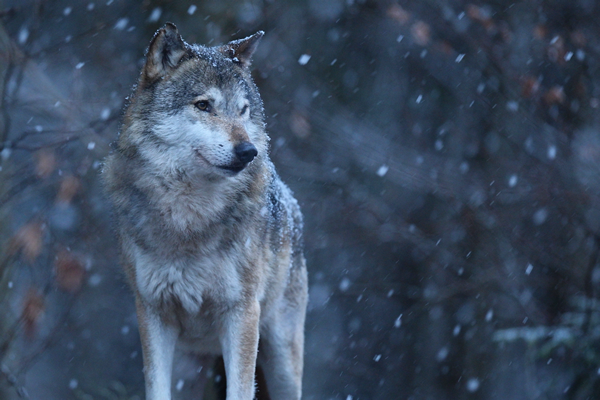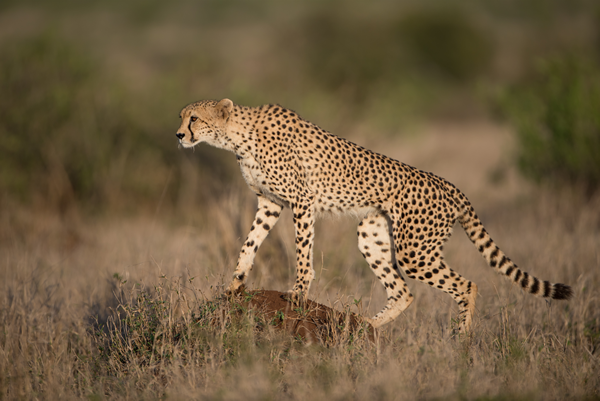1- Introduction: What is Biodiversity and Why is it Important?
The word ‘Biodiversity’ refers to all the different kinds of life you can find in one area, namely animals, plants, fungi, microorganisms, etc. These kinds of life, also referred to as species, vary according to the climate and geographical conditions of the area or habitat. Additionally, these species work together in ecosystems to maintain balance and support life.
Our planet has a variety of habitats, which can be defined as the place or area where certain species live. Read the descriptions for seven habitats:
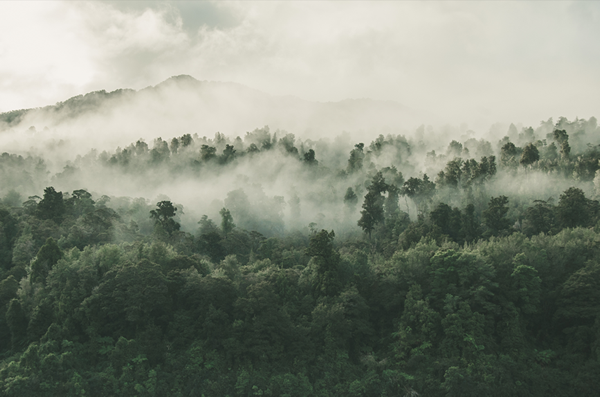 |
Forest It is usually a cold and rainy area of land covered with lots of trees due to the high levels of humidity of forests. Also, trees provide shelter from weather conditions and predators to different insects and animals, such as foxes, deer, etc. |
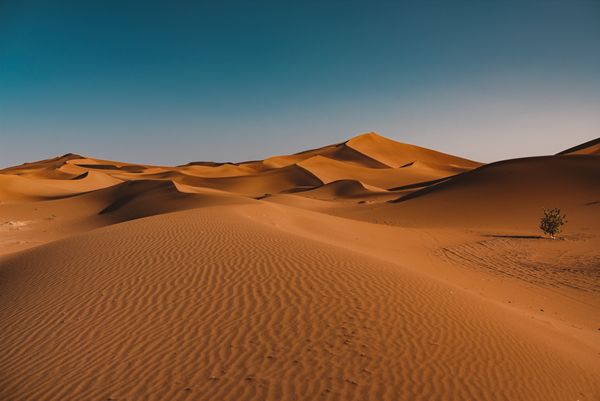 |
Desert A large area of land that has very little water, few plants, high temperatures, and is usually covered by sand. Since deserts do not have many trees or plants, most animals and insects found in there find shelter in the sand. |
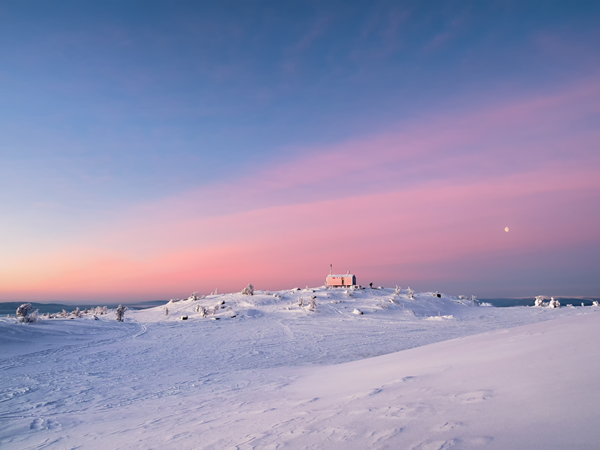 |
Polar regions They are large areas covered with ice or snow, located in the South Pole and North Pole. Some fauna examples found in polar regions are polar bears, penguins, the arctic fox, seals, whales, and so on. |
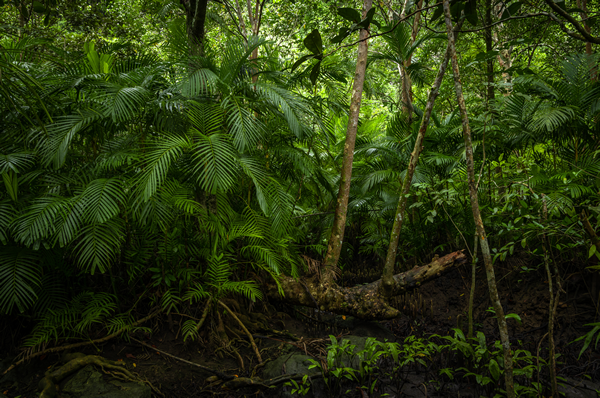 |
Rainforest A thick forest in tropical parts of the world that have a lot of rain and warm temperatures. It is also referred to as jungle. The biggest area in our planet is the Amazon rainforest, located in South America, mainly covering Brazil, and other countries (Peru, Colombia, Bolivia, Ecuador, etc.) |
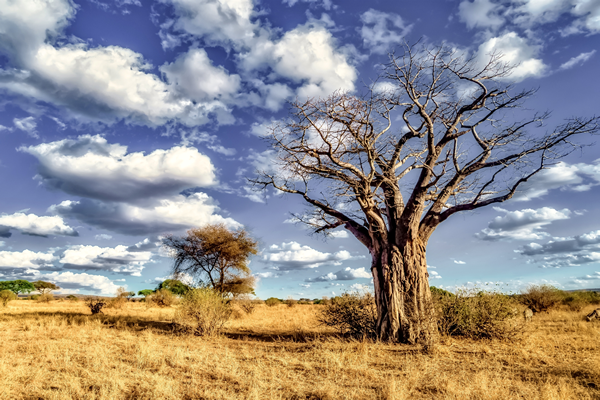 |
Savannah It is a wide-open area of land, usually covered with grass but it has only a few trees. It is also referred to as grassland. The biggest savannah areas can be found in Africa, where temperatures are warm, and rains are seasonal (i.e. happening during some months in a year). |
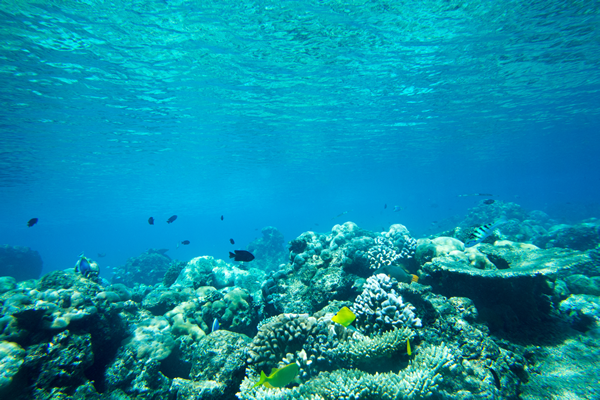 |
Ocean It is a mass of salt water that covers about 70 per cent of Earth’s surface. Oceans provide a huge source of ecosystems for different types of algae, fish, sea mammals, and so on. |
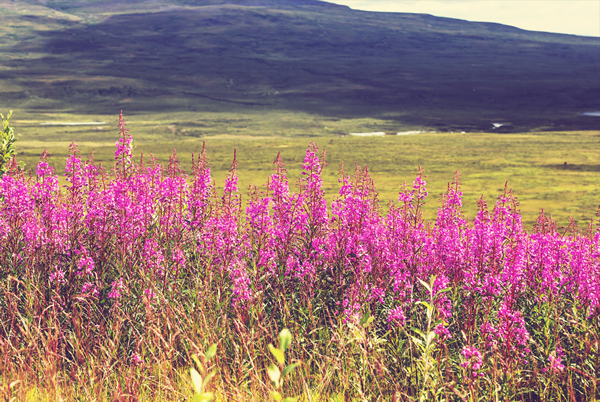 |
Tundra These ecosystems are found in the Arctic and on mountain tops, where the climate is cold and windy. Some flora examples are wildflowers and berries (raspberries, blueberries, etc.) |
Biodiversity supports everything species need in order to survive, such as oxygen, food, clean water, and shelter. The more species conforming an ecosystem, the complex a habitat is, and therefore, resilient to change. For that reason, it is important to preserve ecosystems, so that biodiversity is not affected by some environmental issues, such as pollution.
|
Glossary Fungi (noun): (plural form fungi; singular form fungus) Organisms that usually grow on plants or decaying (i.e. dying) matter, such as mushrooms and mildew. Algae (noun): Simple plants (e.g. seaweed) that grow in or near water. Shelter (noun): A place that offers protection from extreme weather conditions or predators. Resilient (adjective): Able to recover quickly after something unpleasant, such as injuries, shock, damage, etc. Backbones (noun): (also referred to spines) The row of small bones connected together down the middle of the back. Roar (verb): To make a very loud and deep sound, like lions do. Meow (verb): To make the crying sound cats make. |
2- Language Learning
In this section you will find all the necessary vocabulary and structures to describe and comprehend animal descriptions.
2.1- Classifying Animals
Although there are lots of animal classes, you will learn the five vertebrate classes there are. Vertebrates are animals and creatures which have backbones, like humans, cats, ferrets, etc. Let us review their main characteristics.
|
Class |
Description | Pictures |
| Mammal |
Any animal that gives birth to live babies, not eggs, and feeds its young (babies) on milk. Examples: Cow, lion, giraffe (the image on the right). |
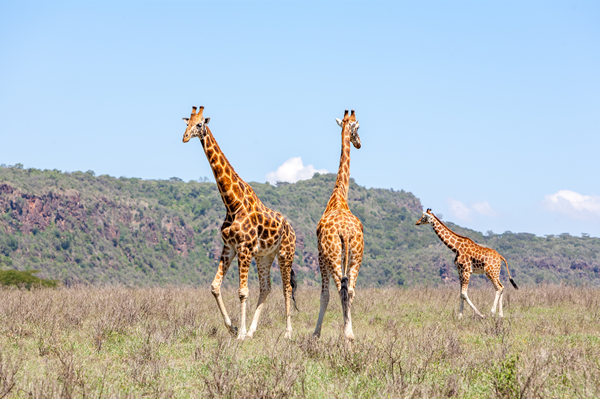 |
| Amphibian |
Any animal that can live both on land and in water. They have cold blood and skin without scales. Examples: Salamander, toad, frog (the image on the right). |
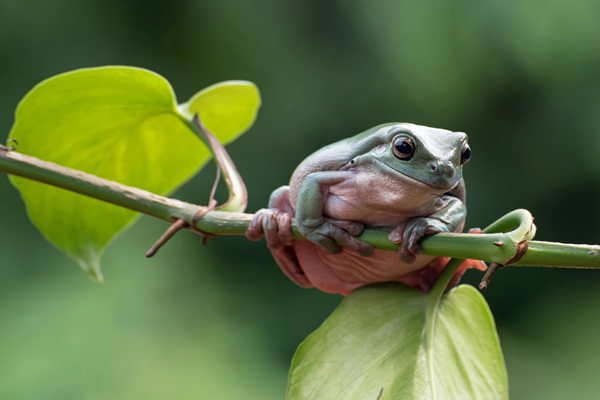 |
| Reptile |
Any animal that has cold blood and skin covered in scales, and that lays eggs. Examples: Crocodile, tortoise, snake (the image on the right). |
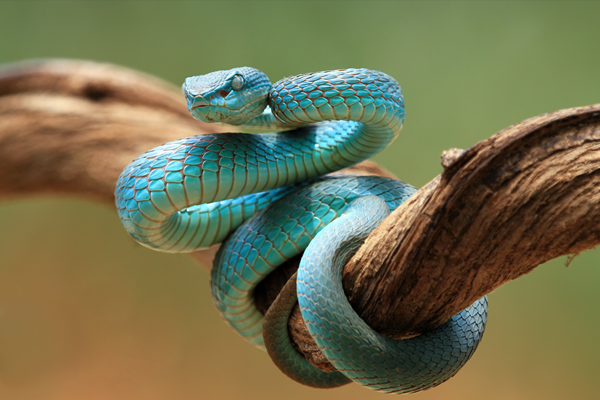 |
|
Bird |
A creature that is covered with feathers and has two legs and two wings. Most birds can fly. Examples: Goose, eagle, toucan (the image on the right). |
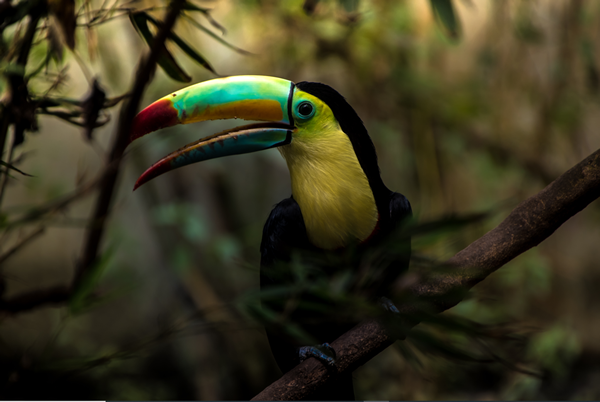 |
|
Fish |
A creature that lives in water, breathes through gills, and uses fins and a tail for swimming. Examples: Shark, salmon, goldfish (the image on the right). |
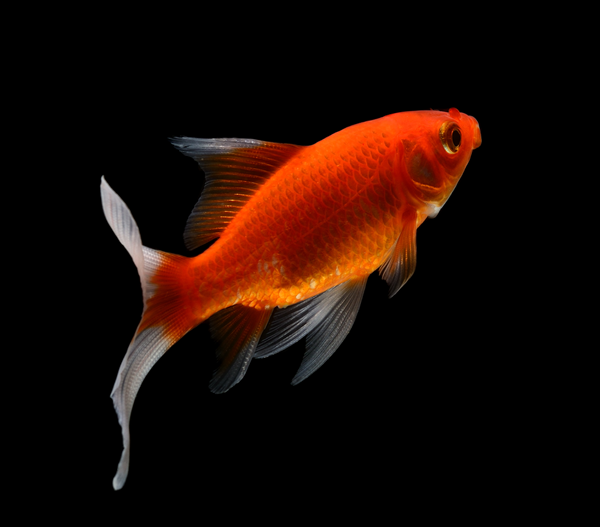 |
2.2- Vocabulary: Physical Characteristics of Animals
In order to describe animals/creatures, we need to consider different aspects or physical characteristics, such as: colour(s), limbs, wings, fur, feathers, etc. explore the table below to know more.
| Features | Image | Example |
| Gills |
|
– Fish breathe in water through gills. – Dolphins aren’t fish because they don’t have gills. |
| Fin(s) |
|
– Dolphins use their fins to swim. – Fish use their fins for balance and swimming. |
| Feathers |
|
– Most birds have feathers. – Some tropical birds have beautiful feathers in different colors. |
| Legs |
|
– A bear has four legs. – Birds have two legs and two wings. |
| Wings |
|
– Ostriches move their wings when running. – Although all birds have wings, some of them cannot fly. |
| Tail | 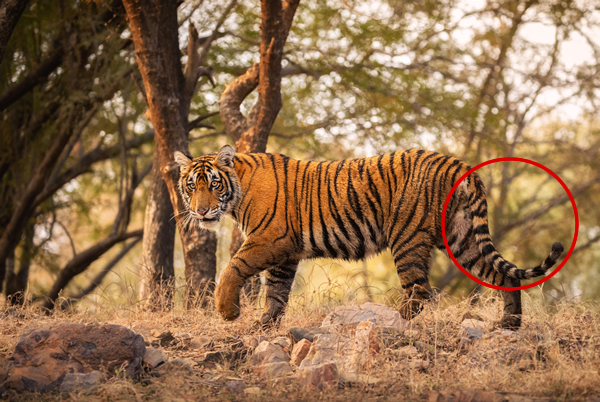 |
– Tigers have long tails. – Some animals use their tails for balance when they climb trees. |
| Bill (or beak) | 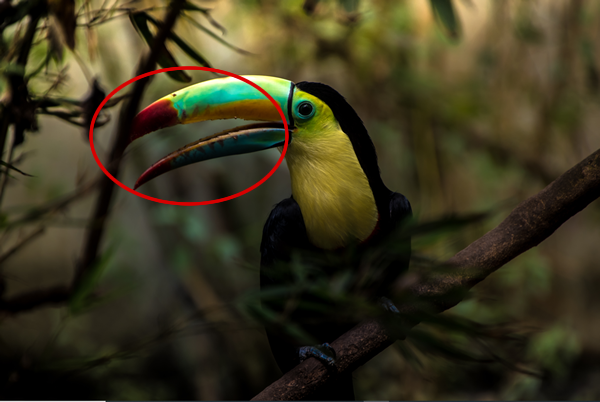 |
– Toucans have colorful beaks. – The shape and size of bills vary according to the bird’s food preference. |
| Scales | 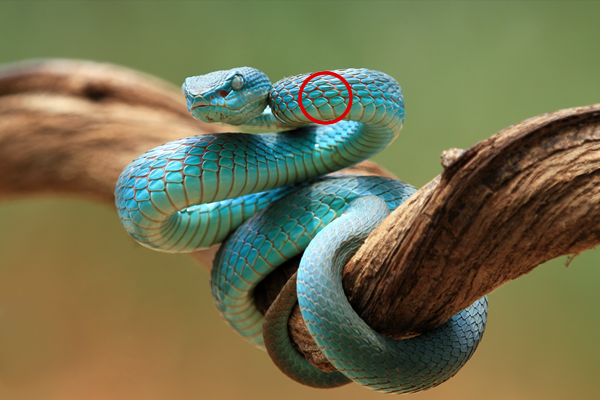 |
– Reptiles have scales to protect them from extreme weather conditions and injuries. – Snakes have scales in beautiful bright colors. |
| Live babies (also live young) | 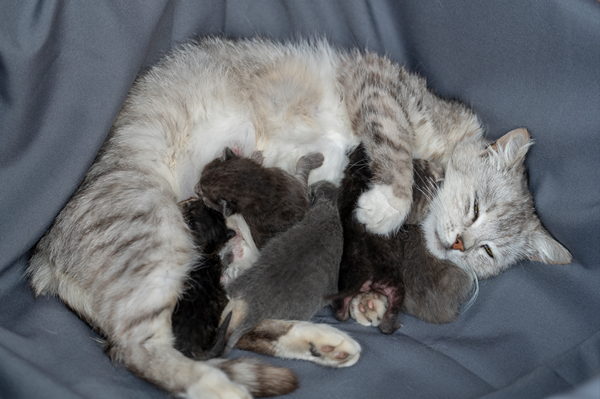 |
– Cats give birth to live young. – Look at that adorable cat mom feeding her newborn babies! |
| Eggs | 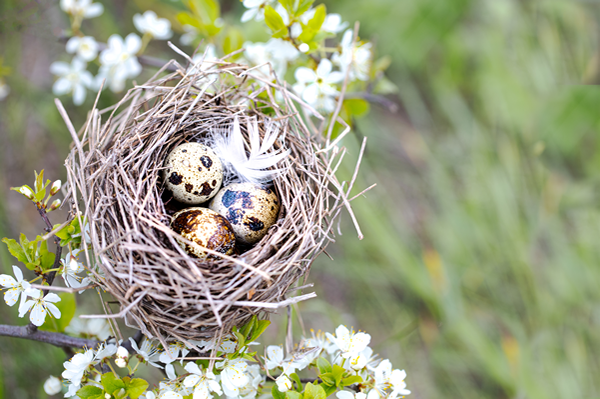 |
– Birds lay eggs and place them in a nest. – Some eggs are really small and have different patterns, such as bright colors and spots. |
2.3- Expressing Abilities and Inabilities
To describe abilities and inabilities, we usually use can and can’t respectively.
 |
It is used to talk about abilities, or actions you are able to do. Example: Cheetahs can run very fast. |
 |
It is used to talk about inabilities, or actions you are not able to do. Example: Cheetahs can’t fly. |
2.4- Expressing Facts
In order to describe facts, we use actions verbs in the present simple tense. You can review the present simple in the diagram below:
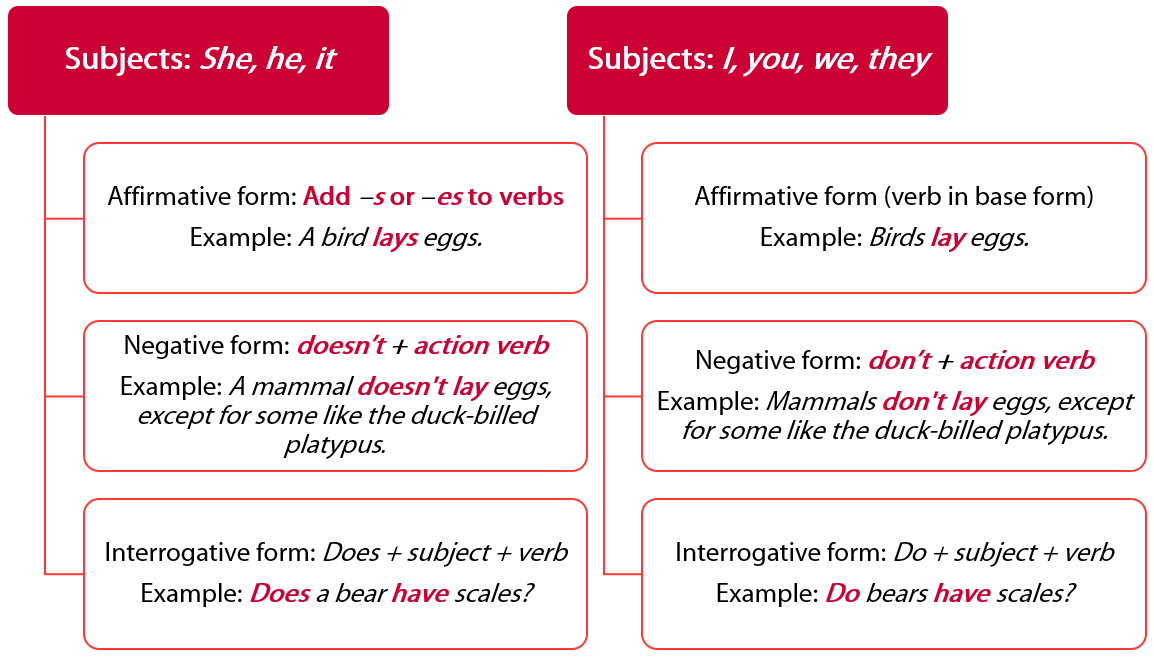
2.5- Describing Animals
In order to describe animals, you can follow the features in the table below.
| Features | Description | Examples |
| Habitat |
Name the habitat(s) the animal/creature is typically found. |
It mainly lives in the savannah. |
| Class |
State how the animal/creature is classified: mammal, reptile, amphibian, fish, or bird. |
It is a mammal. |
| Birth | State whether the animal/creature lays egg(s) or gives birth to live young (babies). |
It gives birth to live young. |
|
Food |
Describe what they eat. Omnivores eat plants and meat. Carnivores eat other creatures and animals. Herbivores eat plants, seed, and fruit. | It eats meat. |
| Can do (abilities) |
Describe things the animal/creature can do. |
It can hunt in groups. It can roar. |
| Can’t do (inabilities) | Describe things the animal/creature cannot do. |
It can’t fly. |
| Physical descriptions | Give at least 3 physical descriptions: scales, feathers, wings, legs, fur, big ears, etc. |
Old males have manes. It has four legs. It has a tail. |
3- Practice!
Now that you have learnt how to name the most important characteristics of animals, read the descriptions below to know how to describe animals, according to their physical features, their abilities and inabilities, their habitats, what they eat, and so on.
a) Animal or creature: Shark.
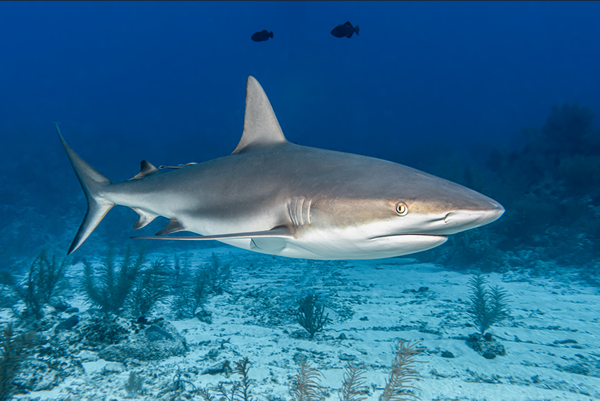
Description: This creature is a big fish. It lives in the ocean. It is a carnivore; it eats fish, turtles, etc. It has a lot of teeth. They can swim fast, but they cannot walk. They have fins to swim in the ocean.
b) Animal or creature: Elephant.
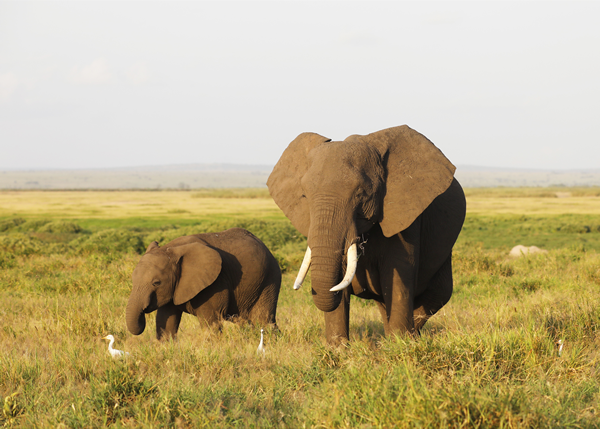
Description: This animal is a mammal. It lives mainly in the savannah. It is an herbivore; it eats plants, tree leaves, etc. It can reach highest trees with its trunks. It can’t usually climb trees because it is a big mammal. It has big ears.
Now, get familiar with the animal names in the images below to increase your vocabulary!
|
Rabbit |
Turtle |
Seal |
|
Penguins |
Lions |
Bear |
|
Owl |
Wolf |
Cheetah<
Comparte este contenido:
Todo el contenido y material en este sitio es propiedad de Wited y está protegido por derechos de autor. Fecha de publicación: 06/03/2024 Última edición: 06/04/2024 [reproductor_audio]
Sigue aprendiendo con WitedEl apoyo académico que tu hijo o hija necesita para aprender más fácil y sin frustraciones, siempre con profesores expertos a su lado. TestimoniosConoce las experiencias de losWited LoversSamantha 10 años Chile Mateo 15 años Perú Thali 8 años México Antonia 16 años Chile Javiera 11 años Chile ¿Qué tipo de apoyo necesitan tus hijos?Selecciona la opción que tu familia necesita Gestionar consentimiento
To provide the best experiences, we use technologies such as cookies to store and/or access device information. Consenting to these technologies allows us to process data like browsing behavior or unique IDs on this site. Not consenting, or withdrawing consent, may adversely affect certain features and functions. Functional Siempre activo
Technical storage or access is strictly necessary for the legitimate purpose of enabling the use of a specific service requested by the user, or for the sole purpose of transmitting a communication over an electronic communications network.
Preferencias
El almacenamiento o acceso técnico es necesario para la finalidad legítima de almacenar preferencias no solicitadas por el abonado o usuario.
Statistics
Technical storage or access used exclusively for statistical purposes.
El almacenamiento o acceso técnico que se utiliza exclusivamente con fines estadísticos anónimos. Sin un requerimiento, el cumplimiento voluntario por parte de tu Proveedor de servicios de Internet, o los registros adicionales de un tercero, la información almacenada o recuperada sólo para este propósito no se puede utilizar para identificarte.
Marketing
Technical storage or access is required to create user profiles for advertising purposes, or to track the user across one or multiple websites for similar marketing activities.
No tienes acceso a este recursoPara usar este recurso necesitas iniciar sesión o crear una cuenta. Resuelve tus dudas con los profesores de WitedCrea tu cuenta o inicia sesión para que nuestros profesores te ayuden *Necesitas una cuenta para hacer preguntas Ayuda con tareas y estudios Chat y videollamadas con profesores Max AI para resolver dudas Contenidos curriculares por nivel Ejercicios para practicar lo aprendido Cursos de reforzamiento Cursos extraprogramáticos Recursos digitales Cuenta para padres/supervisor Informes de rendimiento MaxPoints 3000 |
